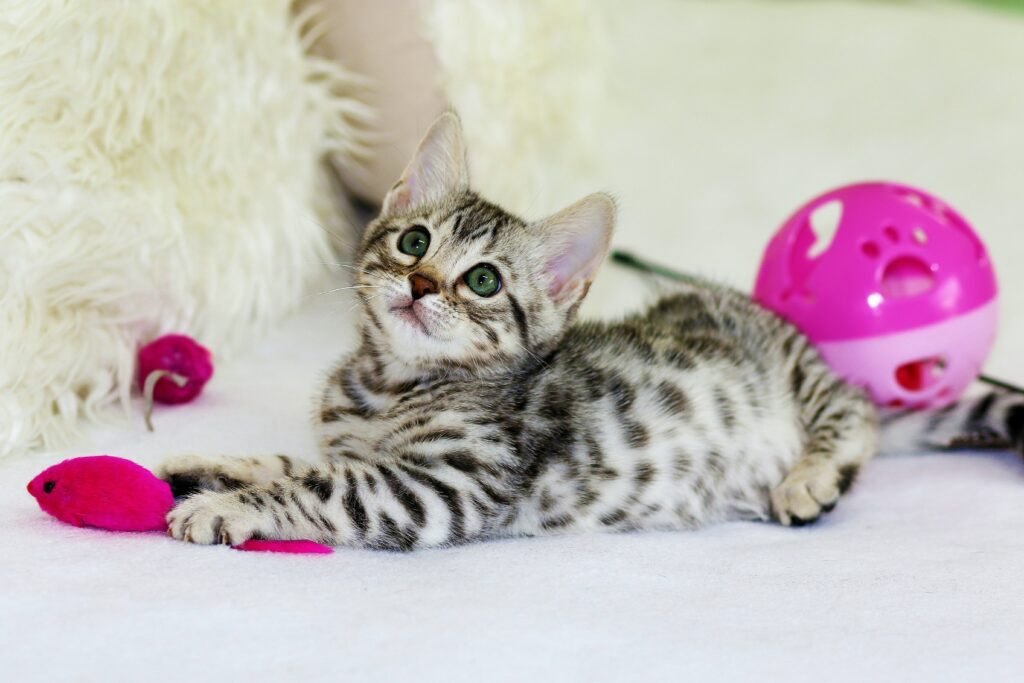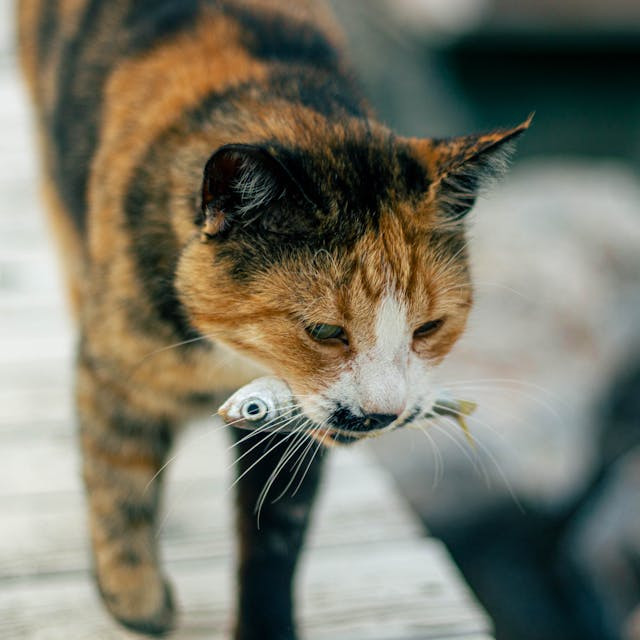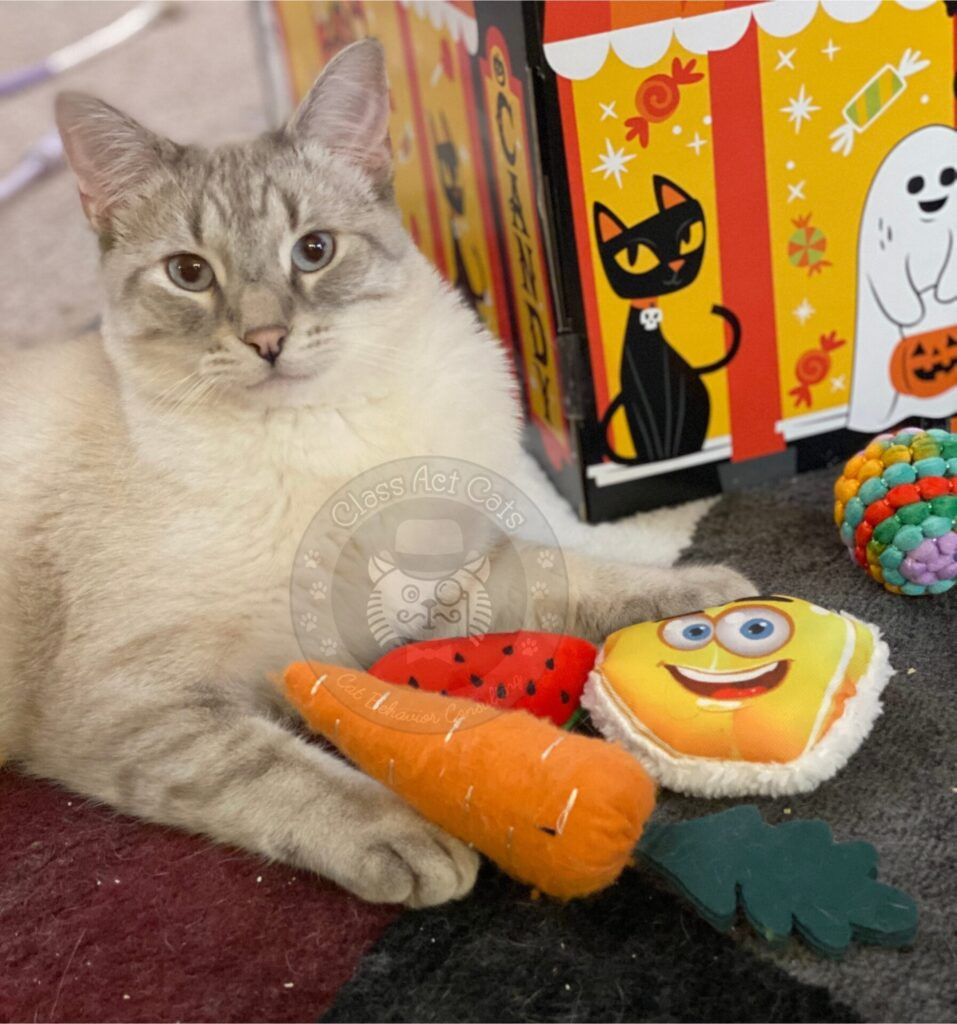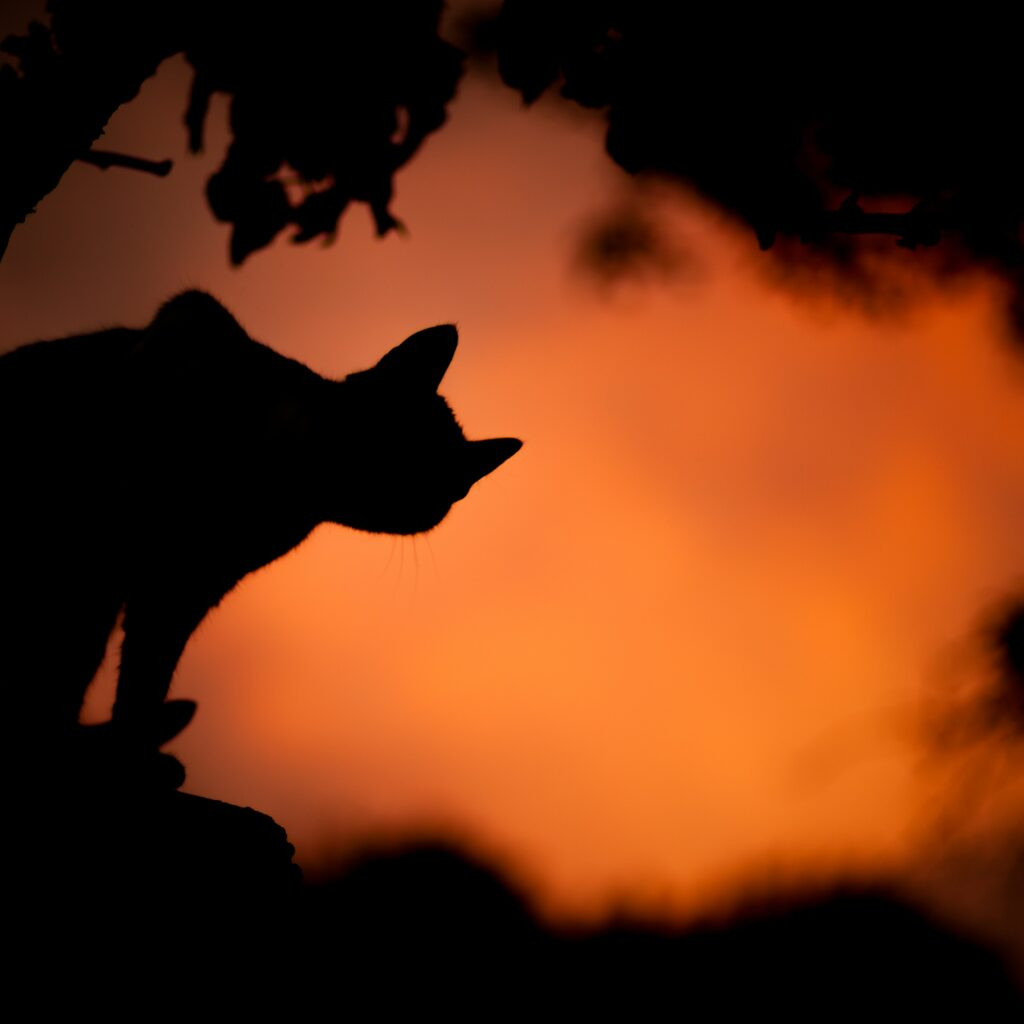Have you ever caught yourself saying, “My cat just isn’t playful”? As a dedicated cat content creator at solcat.net, I’m here to challenge that notion. It’s far more likely that your cat isn’t resonating with how you’re initiating play or the toys you’re offering. Engaging in successful play with your cat can feel like deciphering a complex puzzle, so don’t be discouraged if you find it challenging to spark their playful side.
While selecting the right toys is a crucial element, a topic I delve into in a separate article on choosing the best cat toys, this guide will concentrate on the art of playing with your cat itself. We’ll assume you’ve already equipped yourself with fantastic options, perhaps even the universally adored Cat Dancer.
Seriously, if the Cat Dancer hasn’t yet graced your cat’s toy collection, you might be missing out on a truly exceptional play experience.
The Foundation of Feline Fun: Play Session Basics
At its core, effective play for cats should mimic the thrill of the hunt, mirroring their natural instincts to stalk, chase, and capture prey in the wild – even if that prey is just a stand-in for a tasty treat. While the thought of your cherished pet as a predator might seem jarring, acknowledging their innate hunting drive is key to unlocking fulfilling play.
 A grey kitten lying on a white carpet with some bright pink cat toys, showcasing the playful nature of cats and the importance of engaging toys for 'play of cat'.
A grey kitten lying on a white carpet with some bright pink cat toys, showcasing the playful nature of cats and the importance of engaging toys for 'play of cat'.
Cute and deadly: A playful kitten surrounded by toys. Photo by Kim Davies.
Cats are naturally inclined to hunt small creatures like birds, insects, and mice, engaging in multiple short hunts throughout the day. Mirroring this natural behavior, your play sessions should also be brief and dynamic. Aim for 5 to 15-minute bursts of activity, spread out across several sessions daily. While marathon play might seem beneficial, especially for high-energy cats, shorter, more frequent sessions are actually more effective in tapping into their natural play patterns.
Engaging play sessions necessitate toys that you actively move, mimicking the unpredictable movements of natural prey. Scattering toys passively on the floor transforms them into “dead prey,” failing to ignite your cat’s hunting instincts.
Understanding the Cat Hunt Cycle for Optimal Play
To truly satisfy your cat’s innate hunting drive, play sessions should facilitate the completion of a full hunt cycle. This cycle naturally unfolds in distinct stages:
- Locating Prey: The initial detection of a potential target.
- Stalking and Planning: A period of focused observation and strategic positioning.
- Chasing the Prey: The exciting pursuit phase, engaging their agility and speed.
- Catching the Prey: The moment of capture, providing tactile satisfaction.
- “Dispatching” the Prey: The simulated “kill” phase, often involving biting and bunny-kicking.
- Consuming the Catch: The final reward, often represented by treats or a small meal. (See more on getting a cat to eat).
In my experience guiding cat owners, a common pitfall is prematurely ending play during the stalking and plotting phase. Cats may appear disengaged if they are simply observing a toy without immediately pouncing. However, this period of focused attention is a vital part of the hunt. As long as your cat is intently watching the toy, they are actively engaged and enjoying the Play Of Cat.
Another often-overlooked element is the “consuming” phase. Fortunately, this is easily addressed: conclude each play session by offering your cat a small portion of their regular meal or some irresistible treats. For added enrichment, consider incorporating a food puzzle afterward to extend the hunting experience.
Mastering the Art of Using Cat Toys for Engaging Play of Cat
One of the most prevalent mistakes cat owners make is presenting a toy directly in front of their cat’s face. While seemingly a direct way to engage them, this approach fails to mimic the natural hunt cycle. Prey rarely, if ever, approaches a predator head-on. Furthermore, cats possess limited close-range vision, making it difficult for them to clearly see toys held too closely.
So, what’s the better approach? Instead, move the toy from side to side or, even more effectively, away from your cat. These movements more closely resemble the behavior of a fleeing mouse or other small prey. Guiding the toy around objects, through a play tunnel, or into corners can further pique your cat’s interest, creating the perception of prey seeking cover and setting the stage for a strategic pounce.
Injecting Variety into Play Sessions for Enhanced Engagement
To maintain your cat’s enthusiasm throughout a play session, variety is key. Alter the speed of the toy’s movements. Begin with fast, erratic motions, then gradually slow down, mimicking the tiring movements of prey. Alternate between bursts of speed and slower, more deliberate movements.
If you’re using a feathered wand toy, such as the highly recommended Fukumaru feathered wand toy or Da Bird (both Poutine and Prozac approved!), incorporate aerial movements into the play, but ensure the “bird” eventually “lands” to provide a realistic hunting experience.
As the play session progresses, consider how actual prey would behave in a real hunt. Prey animals become fatigued and may exhibit signs of injury. Your cat instinctively seeks cues that indicate a weakened target, increasing their confidence in a successful “kill.”
 A ginger cat proudly carrying a fish in its mouth, illustrating the hunting success element of 'play of cat'.
A ginger cat proudly carrying a fish in its mouth, illustrating the hunting success element of 'play of cat'.
This blog post took a dark turn, didn’t it? Photo by Baris Yigit.
To tap into this instinct, introduce erratic movements to the toy’s motion. Incorporate jerky, lurching actions to simulate weakened or injured prey. This can signal to your cat that the “prey” is vulnerable and prime for capture.
Utilizing Undercover Tactics for Play of Cat
Beyond moving toys around furniture and other visible obstacles, consider incorporating “undercover” play. If your cat exhibits playful toe-nipping beneath blankets, this could indicate a preference for this style of engagement.
Experiment with moving a toy under a towel or using specialized products like Sheer Fun For Cats. My own cat, Poutine, is particularly fond of pouncing and enthusiastically approves of Sheer Fun For Cats!
 Poutine the cat surrounded by a variety of cat toys, showcasing the joy of 'play of cat' with diverse toy options.
Poutine the cat surrounded by a variety of cat toys, showcasing the joy of 'play of cat' with diverse toy options.
“I like most toys, human.” – Poutine
Engage All Senses for a Multi-Dimensional Play of Cat Experience
Playtime isn’t solely about visual stimulation and movement; it’s about engaging all of your cat’s senses for a truly enriching experience.
Incorporate olfactory stimulation by using catnip, silver vine, or valerian root during play sessions. These natural cat attractants can heighten their engagement and excitement.
Auditory stimulation also plays a vital role, provided your cat isn’t easily startled. Explore toys that produce crinkling sounds, bells, or the ever-popular chirping bird toys that cats find irresistible. Alternatively, introduce crinkle paper or lightly tap the toy against the ground to create enticing sounds.
Another engaging play idea is to introduce a large cardboard box. Fill it with crinkle paper or newspaper and use a wand toy inside the box to generate rustling sounds. Your cat’s natural curiosity should be piqued, prompting them to investigate the source of the noise. Alternatively, provide a tunnel or play tent, many of which incorporate crinkly materials.
Bonus tip: After playtime, transform the box or tunnel into a homemade food puzzle by scattering a small handful of kibble or treats inside.
Maintaining Novelty in Play of Cat to Keep Your Cat Interested
Does your cat initially adore a new toy, only to lose interest after a few days or weeks? Or perhaps they engage enthusiastically for a few minutes of play before appearing bored?
Rest assured, these are typical and expected cat behaviors. Effective play of cat involves rotating toys, both within a single play session and across multiple sessions. For cats with shorter attention spans, keep a variety of wand toys readily accessible to swap them out during play, or experiment with different play techniques outlined in this guide to reignite their interest. I personally use a wall-mounted wand toy holder for easy access and seamless toy transitions.
For cats with more sustained focus, toy rotation remains beneficial. After a week or so of using a particular toy, put it away and introduce a new one. After a few weeks in storage, reintroduce the original toy – it will feel brand new to your cat, reigniting their playful enthusiasm.
Timing is Everything: Play of Cat at the Right Moments
Just as you wouldn’t feel inclined to play a board game right before bed, timing your play sessions to align with your cat’s natural rhythms is crucial. While there’s some flexibility, certain times of day are naturally more conducive to play for cats.
 A cat silhouette against an orange sunrise/sunset background with leaf outlines, symbolizing the crepuscular nature of cats and ideal 'play of cat' times.
A cat silhouette against an orange sunrise/sunset background with leaf outlines, symbolizing the crepuscular nature of cats and ideal 'play of cat' times.
Sunrise, sunset: Ideal times for cat play. Photo by Saso Tusar.
Cats are crepuscular – most active during dawn and dusk. You can likely observe these peak activity periods in your own cat’s behavior. Playing with your cat first thing in the morning and again before bedtime taps into their naturally heightened energy levels. Similarly, if your cat experiences “zoomies” around a specific time, seize that opportunity for a play session.
Another ideal time is linked to feeding. As mentioned earlier, a small meal serves as a perfect conclusion to a play session. Playing with your cat before feeding allows you to naturally wind down the activity and transition into mealtime. While playing after meals is also possible, pre-meal play aligns more naturally with their hunting instincts and provides a more satisfying sequence.
A Note of Caution: Lasers and Electronic Toys in Play of Cat
No guide on playing with cats would be complete without addressing laser pointers and electronic toys.
I’m not entirely against either, especially electronic toys, which can be valuable supplements, particularly for high-energy cats needing more stimulation than you can personally provide. However, they should not replace active, interactive play with you. Electronic toys can serve as distractions or enrichment when you’re temporarily unavailable for dedicated play sessions. Be mindful that some can be noisy and potentially startling to sensitive cats, and not all are designed with feline preferences in mind.
Some electronic toys that cats tend to enjoy include the PetLibro mouse toy, the Hexbug remote control mouse, and the All For Paws Interactive Butterfly Toy.
The Drawbacks of Lasers in Play of Cat
Noticeably absent from that list are laser pointers. Lasers can be profoundly frustrating for cats. While they may initially trigger a wild chase response, the fundamental problem is that cats can never physically catch the laser dot. This lack of a tangible “capture” undermines the hunt cycle and can lead to unsatisfying play.
If you choose to use a laser, limit it to brief introductory moments at the start of a play session and quickly transition to a physical toy. Ideally, it’s best to avoid lasers altogether. If you do use one, always conclude by directing the laser onto a tangible toy, then turn off the laser while your cat “catches” the toy. Avoid automatic laser toys, as they cannot facilitate this crucial transition to a physical reward.
The Rewards of Correct Play of Cat
Engaging in play with your cat in a way that genuinely resonates with them yields significant benefits. Cats who experience fulfilling play are less prone to boredom, exhibit improved overall happiness, and are less likely to develop behavioral issues. This is particularly relevant to play-related behavioral concerns like play aggression. However, not all play is created equal. Prioritize play that allows your cat to complete the full hunt cycle for optimal physical and mental well-being.
To deepen your understanding of the nuances of play of cat, I recommend Mikel Delgado’s insightful book, Play With Your Cat. For personalized guidance or assistance with play-related behavior challenges, I am available for consultations.
Need help with your cat’s behavior?
Set Up a Consultation

